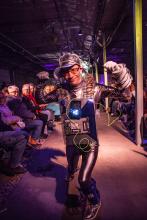Grant Spotlight: Artists in Residence in Everglades
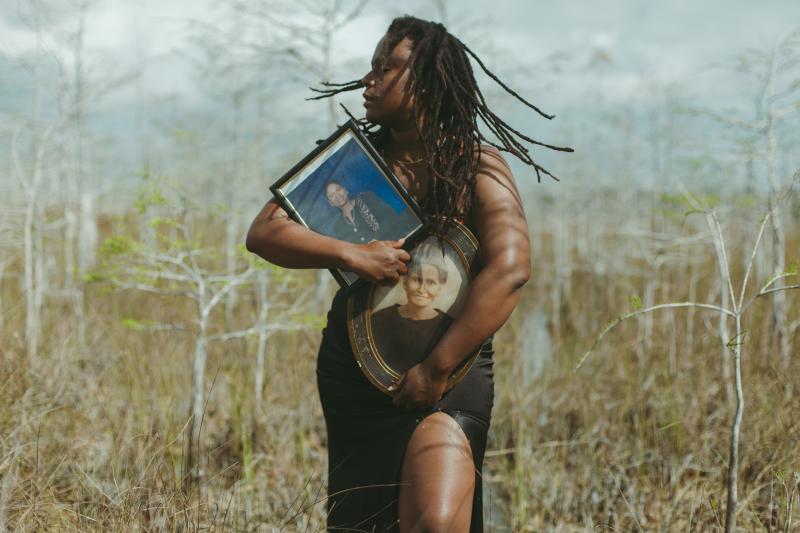
From Arsimmer McCoy's The Skin Your Ancestry Adorned You With series. She stands in Shark Valley, a section of Everglades National Park, holding photos of her great grandmother and mother. Photo by Passion Ward, courtesy of Arsimmer McCoy
Multidisciplinary artist Arsimmer McCoy’s earliest memories of the Everglades are of fishing with her father. The local power plant was surrounded by waterways, and at night, McCoy said people would go down and fish off the rocks—for some as a hobby, others as a life source.
“This is also the conversation that a lot of people of color, especially Black people in the city of Miami, have about how they connect to landscape and environment,” she told the National Endowment for the Arts (NEA). “It's always been a place of survival, danger, survival, struggle.”
In February 2022, McCoy had the opportunity to deepen her relationship to the Everglades—a subtropical wetland that spans two million acres across central and southern Florida—during an artist residency in the national park.
For more than 20 years, Artists in Residence in Everglades (AIRE), a non-profit operating within Everglades National Park and the greater Miami area, has offered an immersive month-long residency in a cabin that once housed park staff.
AIRE was recently recommended for a $25,000 NEA Grants for Arts Projects award in the first cycle of awards for fiscal year 2024. It is the second NEA grant AIRE has received to support the residency program.
McCoy now serves as AIRE’s residency coordinator, guiding artists as they enter a space that can feel unfamiliar or daunting. McCoy said AIRE was a unique residency experience for her because of the support she received, including the opportunity to bring her daughter.
“To be able to bring my daughter out to the Everglades, to feel safe, to have the safety of the rangers, to have the safety of AIRE, that was a really big deal for me,” she said. “It is beautiful but difficult for single mothers to be able to be artists.”
This level of support is critical to AIRE’s mission, particularly after a strategic realignment in 2021 led by the AIRE board co-chairs Esther Park and T. Robertson Carter. The organization aimed to make the Everglades and residency more welcoming to all.
Interdisciplinary artist and designer Cornelius Tulloch is AIRE’s artistic director and a former AIRE fellow. He completed his residency in January 2022.
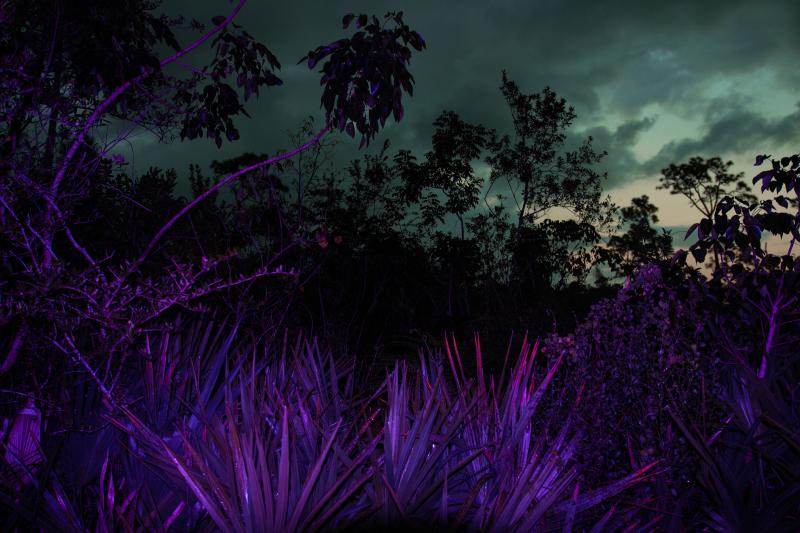
From a series of landscape portraits taken by Cornelius Tulloch in Everglades National Park, inspired by Florida Highwaymen paintings. Photo by Cornelius Tulloch, courtesy of the artist
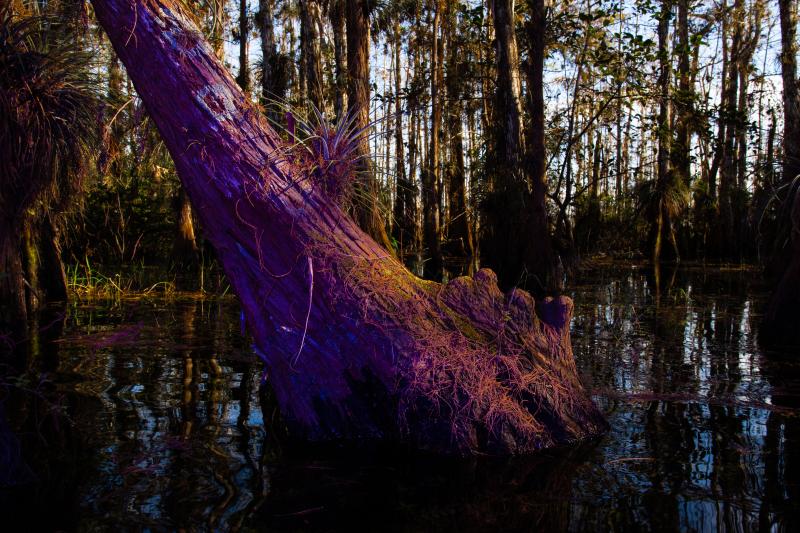
Photo by Cornelius Tulloch, courtesy of the artist
“There was a lot of intention put into the way the application was drafted to attract people who would respond and have authentic responses to that prompt,” he said.
In addition to changing the application, AIRE increased the stipend to make the residency more accessible and provided greater flexibility to artists, such as allowing McCoy to bring her daughter to the two-bedroom AIRE cabin.
AIRE also partnered with other organizations including Outdoor Afro, a non-profit that offers opportunities for Black people to explore nature, on events and outreach.
“[These changes happened] because of the conversations that are constantly being had of not only how do we champion inclusion through words but actually act on it,” Tulloch said, “Not just giving someone an opportunity but also supporting them throughout it and afterwards as well, which is a lot of what I'm working on.”
“Even now we're still learning and growing, and the park is growing with us. The park has their own history when it comes to exclusion,” Tulloch said. “How do you change this narrative? I would say the residency has made a major impact on the park to shift dialogue and ask, 'what does inclusion actually look like?'”
Both McCoy and Tulloch’s residencies in the park involved exploration of history and race. Homecoming, one of two projects McCoy worked on, revolved around the relationship between Black and Indigenous people in the area. She brought her family to meet with Betty Osceola and Houston Cypress, two Native-American artists and activists from the region. They met Osceola’s pet alligator and exchanged food from their respective cultures, like Indigenous fried bread and African stew.
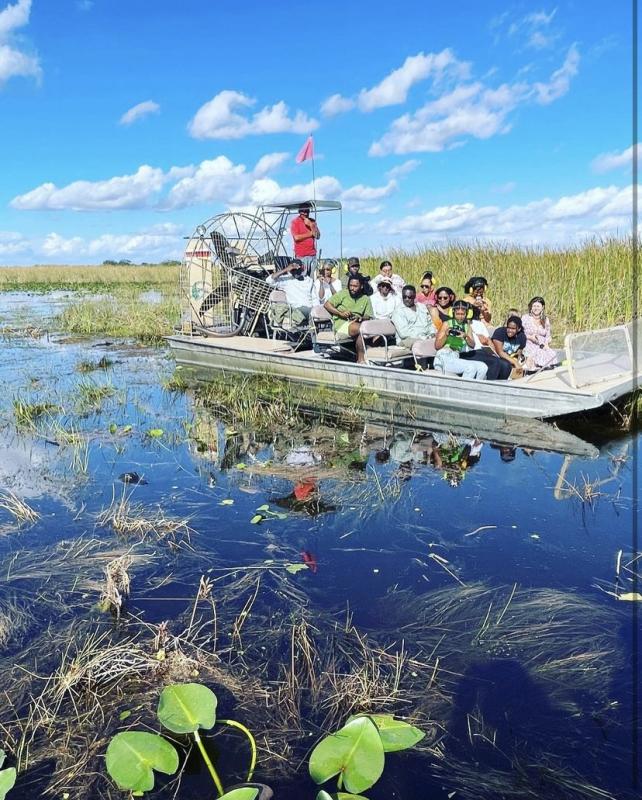
As part of Arsimmer McCoy's Homecoming project, guests travel by airboat to a tree island to share a meal and conversation about the connection between Black and Indigenous communities. Photo courtesy of Arsimmer McCoy
Tulloch, who had only been to the Everglades once before his residency, knew little about history of the place. During his time in the AIRE cabin, he researched Black Seminoles and learned of the Florida Highwaymen, a group of Black artists from the 1950s who painted landscapes of South Florida.
Tulloch said he felt more like a journalist than an artist at times, spending so much time embedded in the park and tracking down stories.
“I started unlocking stories and I was like, ‘There's no way that I've lived this long being from Florida and never heard these things,’” he said. “I had only been to the Everglades once, now I'm there all the time. [The AIRE residency] changed my relationship with [Miami,] this city that I've grown up in and my connection to it. How I saw my heritage and connection to this space has drastically changed through all that I was able to uncover and experience.”
McCoy stated that her residency was equally transformative.
“[It showed] that my work is not limited to this place or that place because I'm a Black woman and I'm speaking about Black stories about Black Miami,” she said. “My stories actually can go to anyone's space, can be about everyone.”


